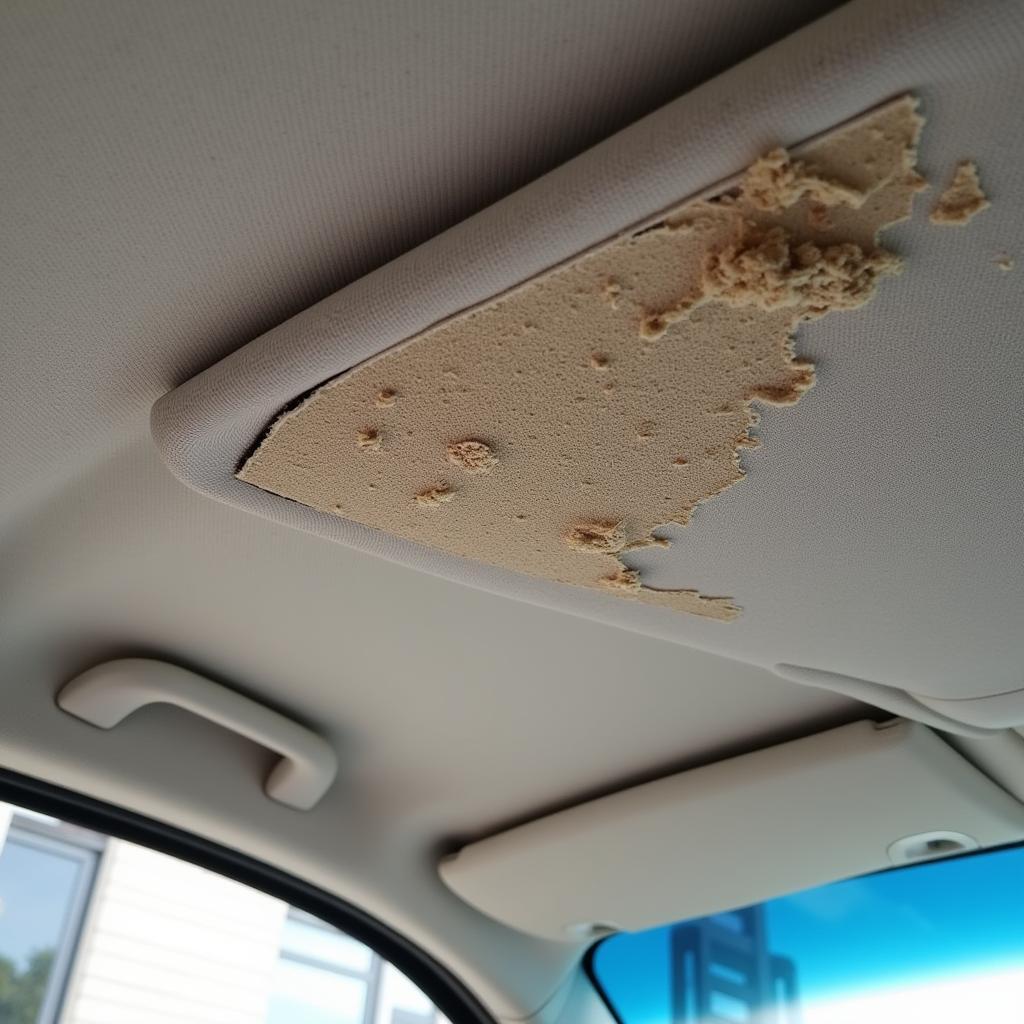Experiencing discomfort or difficulty adjusting your car seat back? Car Seat Back Problems are a common issue that can stem from a variety of factors, ranging from simple wear and tear to more complex mechanical failures. This guide will delve into the common causes of car seat back problems, provide troubleshooting tips, and outline repair options to get you back on the road in comfort.
Understanding Car Seat Back Mechanisms
Before diving into troubleshooting, it’s helpful to understand the basic mechanisms that allow your car seat to adjust and recline. Most modern car seats utilize a system of levers, cables, and a reclining mechanism:
- Levers: These are usually located on the side of the seat and are used to engage the reclining mechanism or adjust the seat’s height.
- Cables: Thin metal cables connect the levers to the reclining mechanism, transferring the force from your hand to the seat back.
- Reclining Mechanism: This is the heart of the system, often consisting of a ratcheting gear or track system that locks the seat back into different positions.
Common Car Seat Back Problems
A malfunction in any of these components can lead to problems with your car seat back. Let’s explore some of the most common issues:
1. Seat Back Won’t Recline or Adjust
Cause: This is often a telltale sign of a broken cable or a problem with the reclining mechanism itself. Over time, cables can fray, stretch, or snap, preventing the lever from engaging the mechanism. Similarly, the teeth within the reclining mechanism can wear down or break, making it impossible to lock the seat back into place.
Troubleshooting:
- Inspect the cables connected to the seat adjustment lever for any visible signs of damage.
- Listen for any unusual clicking or grinding sounds when operating the lever, which might indicate a problem with the reclining mechanism.
2. Seat Back Feels Loose or Wobbly
Cause: A loose or wobbly seat back is often caused by worn-out mounting brackets or bolts. These components secure the seat back to the seat frame, and over time, vibrations and stress can cause them to loosen or fail.
Troubleshooting:
- Examine the bolts securing the seat back to the frame, checking for looseness or missing bolts.
- Inspect the mounting brackets for any signs of bending, cracks, or other damage.
3. Seat Back Makes Noise When Adjusting
Cause: Clicking, popping, or grinding noises when adjusting the seat back often point to a problem with the reclining mechanism. This could be due to worn-out gears, a lack of lubrication, or debris lodged within the mechanism.
Troubleshooting:
- Try lubricating the reclining mechanism with a silicone-based lubricant to see if it reduces the noise.
- If the noise persists, it’s likely that the mechanism itself needs to be inspected and potentially replaced.
Repairing Car Seat Back Problems
The complexity of repairing a car seat back problem can range from a simple DIY fix to a more involved repair requiring professional assistance.
DIY Repairs
- Tightening Loose Bolts: If you discover loose bolts securing the seat back, tightening them with a wrench or socket set might be all that’s needed.
- Replacing a Broken Cable: Replacing a broken seat adjustment cable can be a relatively straightforward DIY task if you have basic mechanical skills. You’ll need to purchase a replacement cable specific to your car model.
Professional Repairs
- Reclining Mechanism Replacement: If the reclining mechanism is faulty, replacement is usually the best course of action. This often involves removing the seat from the vehicle and disassembling parts of it to access the mechanism.
- Welding or Bracket Replacement: Damaged mounting brackets might require welding or replacement, which is best left to a professional with the right tools and expertise.
“When dealing with car seat repairs, it’s crucial to remember safety first,” advises John Miller, a seasoned automotive mechanic with over 20 years of experience. “Always disconnect the vehicle’s battery before working on any electrical components, and never hesitate to consult a professional if you’re unsure about a repair procedure.”
Preventing Future Car Seat Back Problems
Like any other part of your car, your seats benefit from preventive maintenance. Here are some tips to keep your car seats in optimal condition:
- Regular Cleaning: Keep your car seats clean from dirt, debris, and spills that can contribute to wear and tear.
- Avoid Excessive Force: Don’t force the seat back to recline or adjust beyond its intended range of motion.
- Address Issues Promptly: Don’t ignore any unusual noises or resistance when adjusting your seat back. Addressing problems early can prevent more serious and costly repairs down the line.
Conclusion
Car seat back problems, while common, can often be resolved with a bit of troubleshooting and timely repairs. Understanding the common causes and following the tips outlined in this guide can help you maintain comfortable and functional car seats for miles to come. If you’re experiencing persistent or complex issues, don’t hesitate to seek professional assistance from a qualified automotive technician.
Need expert help with your car seat back problems? Contact AutoTipPro today at +1 (641) 206-8880 or visit our office at 500 N St Mary’s St, San Antonio, TX 78205, United States. We’re here to help you get back on the road in comfort and style!






Leave a Reply